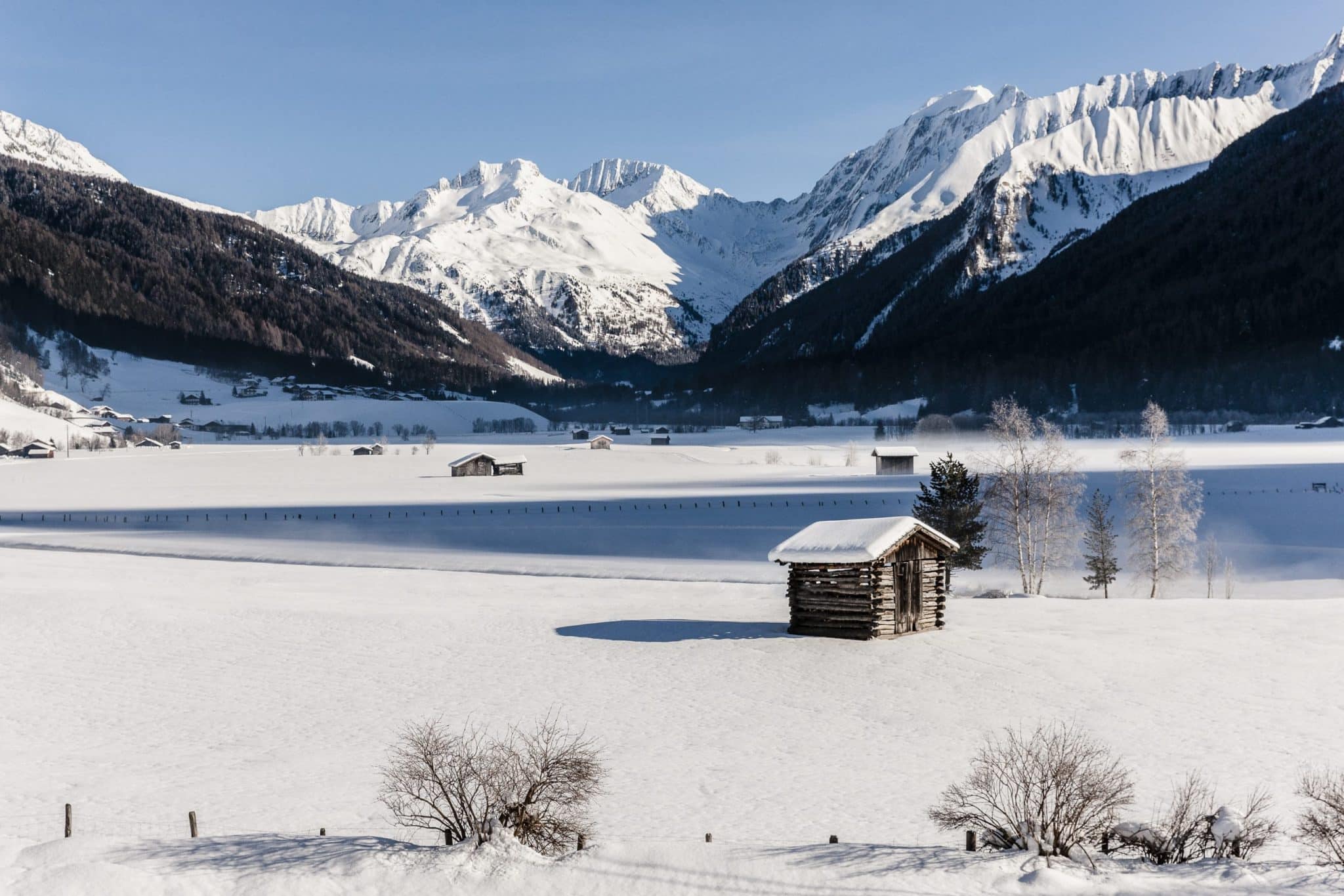With the new 10-seater gondola up to Sterzing’s local mountain, the Rosskopf
by Susanne Reuter
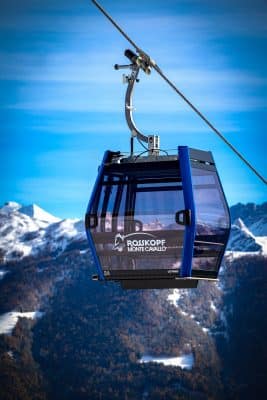
The Rosskopf skiing and hiking area is located just a few minutes from the centre of Vipiteno’s city centre and, since the 2022-2023 winter season, has been taking guests up to an altitude of almost 2,200 metres with a new 10-seater gondola from the Leitner company. It covers the altitude difference of almost 900 m over a length of 2,549 metres at a speed of 6.0 m/sec in about 7 minutes. Up to 2,300 people can be transported per hour. Another plus: it is barrier-free. Skis, snowboards, sleds and strollers can be transported without any problems. In just 10 months of construction, a new valley station was built and a new gondola lift was completely reinstalled. At the end of January 2023, it was inaugurated in a festive setting.
Once at the top, guests can choose between alpine skiing with approx. 20 kilometres of pistes with a valley run to Vipiteno, winter hikes to 7 different huts or another special pleasure for young and a little older: At 10 kilometres, the longest snow-covered and illuminated toboggan run in Italy is located directly at the mountain station.
- Coming from the north, take the Brenner motorway (A13, A22), exit Vipiteno or take the train to get there.
- Everything about the small town in the north of South Tyrol: sterzing.com. Extensive material available at the tourist information, city tours can be booked.
- Skiing, leisure and hiking area Rosskopf: rosskopf.com
- A must during the Advent season: Christmas market in Vipiteno: weihnachtsmarkt-sterzing.com
The really ingenious tobogganing fun through a forest landscape stretches over 900 metres in altitude down to the valley station in the village. Those who decide at short notice can rent the toboggan at the valley station. Every Friday evening night tobogganing is possible.
The Rosskopf outdoor area scores with other attractions during the snow-free months: donkeys, goats and bucks, mountain hares, llamas and alpacas are at home in the ‘Rossy Park’ and want to be admired and petted. During the summer months, you can also sign up for ‘llama trekking’. Over a length of 1,300 metres and with an average gradient of 20 per cent to a maximum of 56 per cent, brisk speeds can be reached on the new summer toboggan run. The start is from the mountain station of the panorama lift. The popular family fun winds its way downhill about 300 metres in altitude.
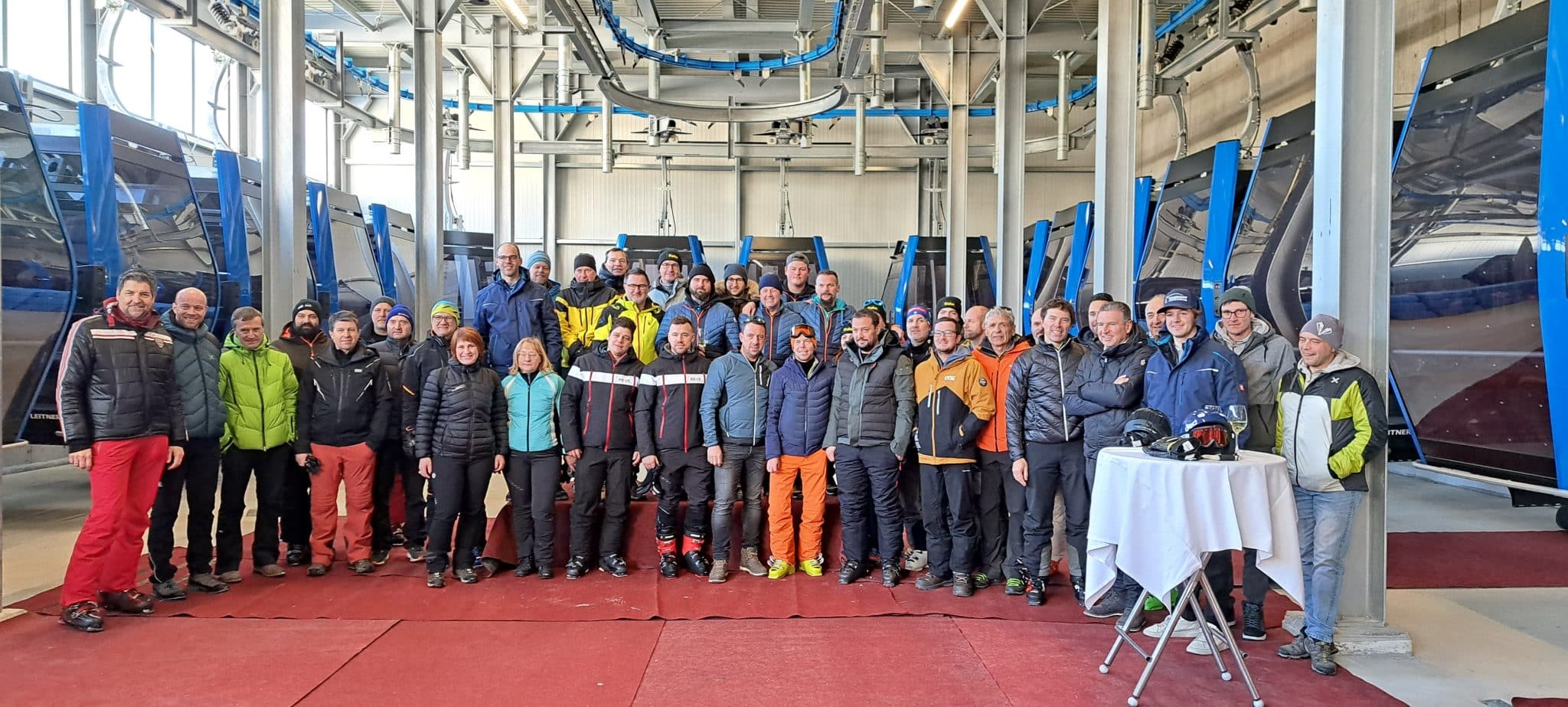
The original Pfitscher Valley
If you like it very quiet, you can retreat to the Pfitscher Valley. Winter hikers, snowshoe hikers or cross-country skiers like me find in the nearby Ursprung Valley
(Val di Vizze). The high valley at an altitude of almost 1500 m is a real insider tip in my eyes. Shortly after St. Jakob is the end of the valley and therefore the region is correspondingly little frequented. I find the silence here an absolute luxury, apart from the occasional ringing of the church clock and the gliding sound of my cross-country skis, there is absolutely nothing to hear here. In the summer months, the valley is an ideal starting point for easy hiking routes to challenging tours in high alpine terrain. And brand new: The via ferrata Ölberg near Afens in Pfitsch delights sure-footed climbers with a climbing length of approx. 550 m. The right equipment can be rented at the “Skytrek” high ropes course in Vipiteno. An unforgettable experience for experienced hikers is the mountain tour to the Hochfeiler at 3510 metres. By the way, the popular long-distance hiking trail ‘Alpenüberquerung’ ends here in the Pfitschtal or in Sterzing, which starts at Lake Tegernsee and leads through the Zillertal . On the way back towards Vipiteno, I discover the Graushof in Afens, a small idyllically situated guesthouse with an inn, whose traditional South Tyrolean delicacies and Italian specialties inspire.
Rich in history: Vipiteno
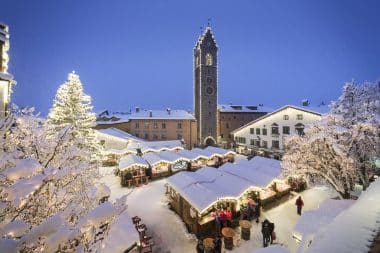
Most people probably only know the alpine town at 948 metres from driving past. The mountain railway that leads to the Rosskopf crosses the motorway, followed shortly afterwards by the exit. But Vipiteno is really worth a visit: equipped with a medieval trading privilege, the picturesque Fugger town on the southern slope of the important Brenner route began its rise. At that time, many entrepreneurs chose the city as their company headquarters. They had their houses designed in the patrician style or built from scratch. With its magnificent town houses, picturesque shopping streets, medieval squares and a pretty mountain backdrop, Vipiteno in the north of South Tyrol is one of the most beautiful small towns in Italy. The Zwölferturm is the city’s landmark. It separates the old town from the new town and, at 46 metres, is the tallest building in the village. The tower was built between 1468 and 1472 over the city passage and used as an upper city gate. This was at a time when the nearby silver mine in the Ridanna Valley was helping the area to prosperity and the town of Vipiteno was experiencing its upswing as a Fugger town. Above the archway, two marble plaques still remind us of the laying of the foundation stone by Duke Sigismund of Austria in 1469. In 1867, the Gothic pointed spire burned down, after which it was replaced by today’s stone stepped gable. The carillon with 25 bells from the Grassmayr bell foundry, which was recently installed in the tower, also has a special history: the effect and art of the bell sound is constantly being developed by Austria’s oldest family business and has been passed on as a secret in the 14th generation. The musician and composer Josef Haller from Sterzing composed his own piece with ensemble accompaniment for the new carillon, which will be performed during the Advent and Christmas season. Every weekday at 5 p.m., visitors enjoy a small carillon.
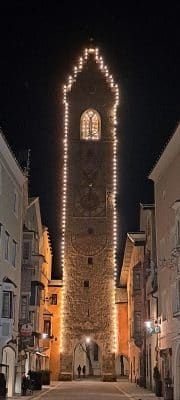
Not far away is the town hall with the Gothic council chamber, built in 1468, where the city council still meets today. It also bears witness to the prosperity of the 15th century, when mining was at its peak. Incidentally, in this historic ‘Sala Storica’, which is completely panelled and can only be heated by a tiled stove, there is the table at which Andreas Hofer* decided the end of the freedom struggles in November 1809. At the time, the table was in an inn in Sterzing, and his fellow campaigners Haspinger and Speckbacher were also in the group.
Also worth a visit is the Church of the Holy Spirit. Built in 1399, it is one of the best-preserved Gothic churches in South Tyrol. The colourful fresco cycle Hans von Bruneck dates from 1415 and depicts the Annunciation, the Mount of Olives, the Kiss of Judas, Christ before Pilate, the Coronation of Thorns, the Carrying of the Cross and the Resurrection and, on the west wall, the Last Judgement.
In the south of the city we find the Deutschhaus, where the Multscher and the City Museum are located. Hans Multscher from Ulm created the altar for the parish church in the middle of the 15th century, parts of which are exhibited there. Today, the Teutonic Order in South Tyrol has more than two dozen priests and brothers and more than 40 sisters. In the city museum, paintings of the city and its surroundings as well as excerpts from the history of the Teutonic Order can be seen. “Our Lady in the Moss”, the parish church, is another jewel of Sterzing. It is one of the largest churches in Tyrol and with its more than 32-metre-high outer façade, it is considered the tallest sacred building between Munich and Verona.


